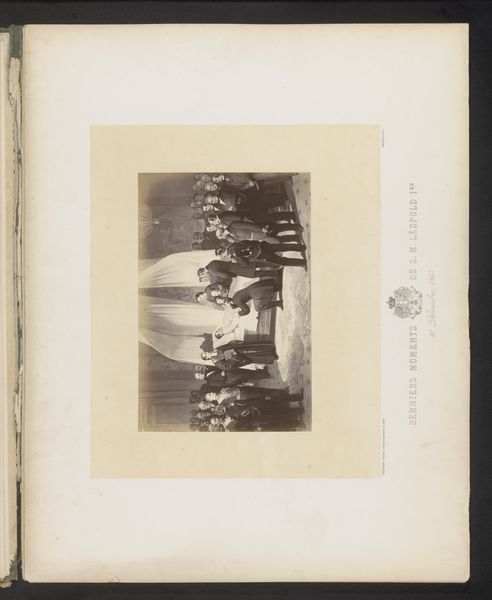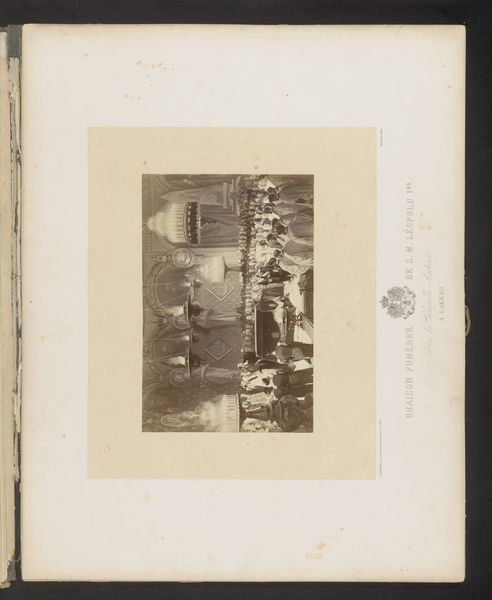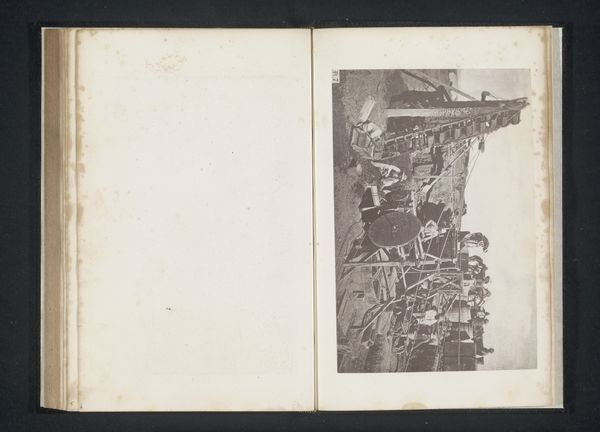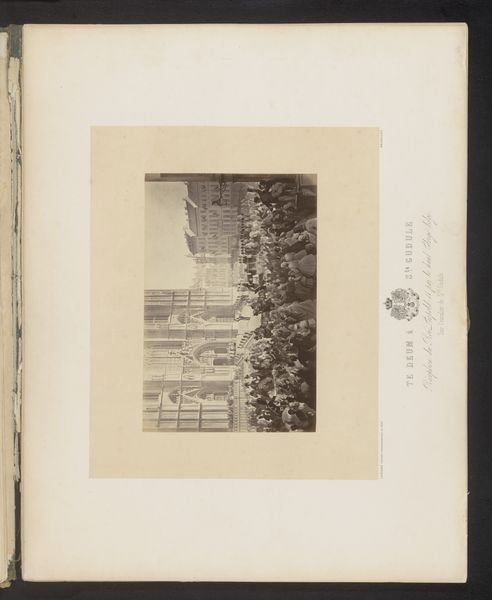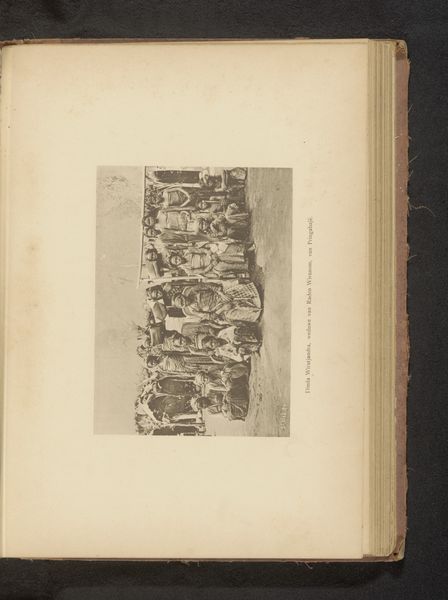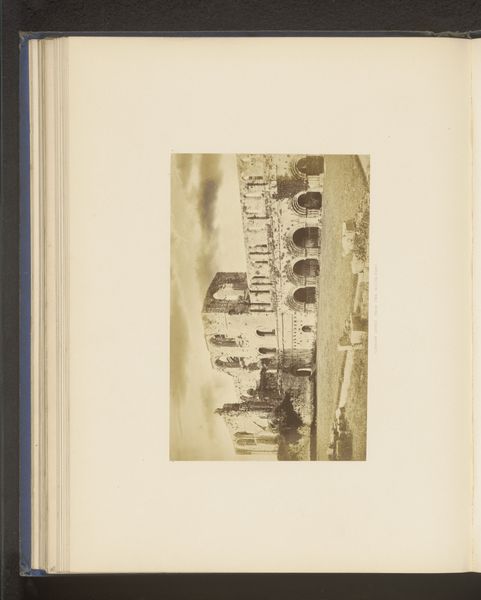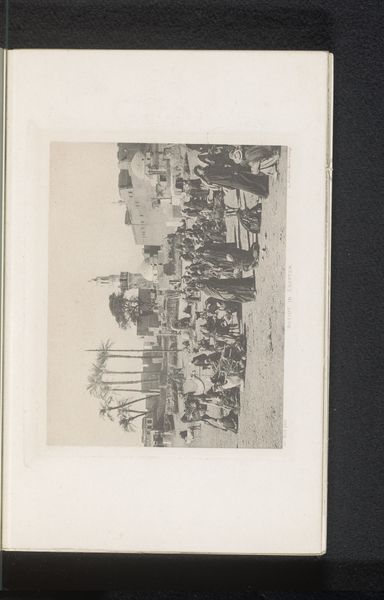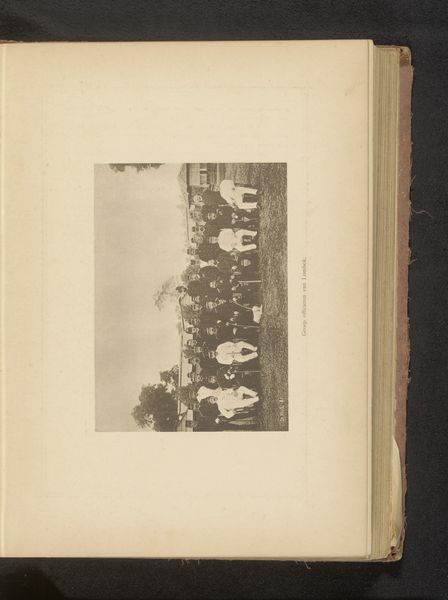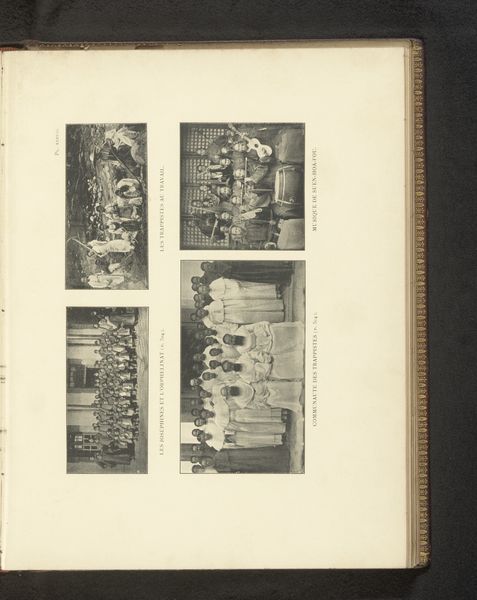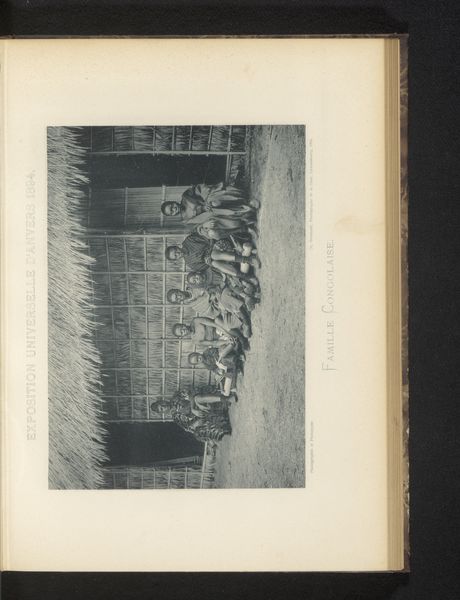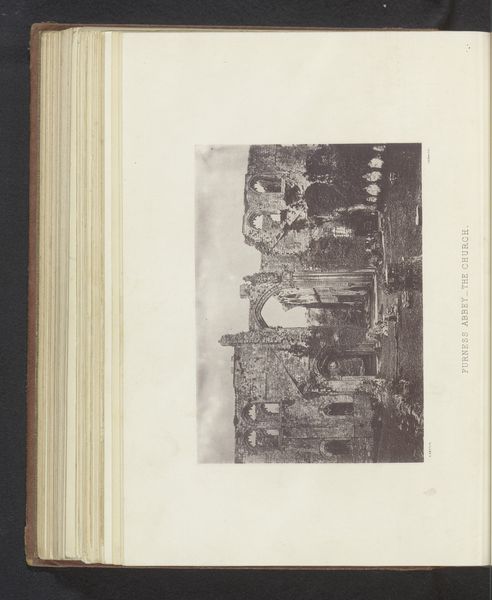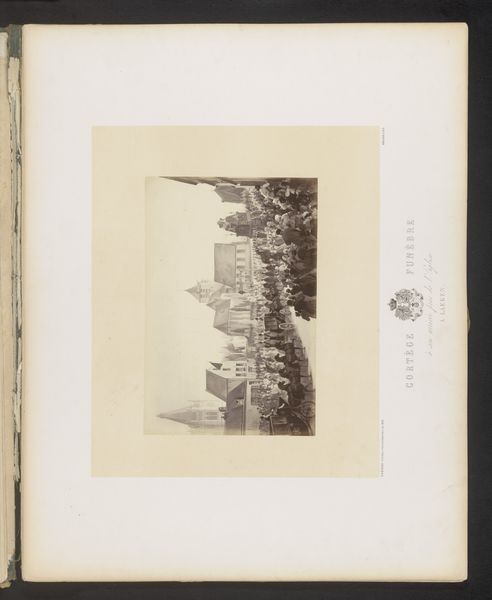
Fotoreproductie van een ontwerp van de inauguratie van koning Léopold II van België als lid van de Orde van de Kousenband before 1866
0:00
0:00
ghemarfreres
Rijksmuseum
print, photography, gelatin-silver-print
#
portrait
#
ink paper printed
# print
#
photography
#
gelatin-silver-print
#
history-painting
#
academic-art
Dimensions: height 169 mm, width 283 mm
Copyright: Rijks Museum: Open Domain
Curator: What a fascinating document! Before us, we have a photoreproduction—likely a gelatin silver print—of a design related to the inauguration of King Leopold II of Belgium into the Order of the Garter, predating 1866, created by the Ghémar Frères. Editor: My initial impression is one of formality, even coldness. The scene is captured with such rigidity. It evokes the calculated performance of power, wouldn’t you agree? There’s something distancing about the monochromatic palette too. Curator: Precisely. This print, while photographic in its execution, points to a constructed performance. The Order of the Garter, Britain's highest order of chivalry, held immense political weight, symbolizing alliances and power dynamics. This piece highlights the significance of Leopold's inclusion, suggesting an effort to align himself within a certain European framework. Editor: And look at the composition—all those figures meticulously arranged. The architectural details loom almost threateningly. The chandelier especially strikes me. Doesn't it feel as though it’s hanging there like a sword of Damocles? Are we perhaps meant to contemplate not only power but the potential dangers attached to it? Curator: It certainly contributes to the overall tone. History painting, particularly of this era, often relied on the precise deployment of visual cues to communicate not just the event itself, but also the desired interpretation. We see that here. It served the purpose of solidifying royal narratives and promoting national identity. This was meant to convey not just a ceremony, but an image of legitimacy, internationally recognized. Editor: Notice, too, the symbols embedded in the room's decorations, though blurry, they create this visual echo-chamber of past glories and future ambitions, and the robes and ceremonial garments practically vibrate with cultural importance. Each element works as a visual reminder of Belgium's ties to a long, revered lineage. Curator: Exactly. Consider also the role of Ghémar Frères as producers of royal portraits and representations. They operated as agents within the theatre of royal representation, producing and disseminating carefully controlled images that projected desired images of Leopold and the monarchy. Editor: It's fascinating to dissect this photographic reproduction of an event as more than a historical record. The piece reflects a world carefully constructing itself through images, consciously embedding itself within narratives of prestige and purpose. Thank you, that gives us much to reflect on about visual strategies used to cultivate specific ideas around kingship and international influence.
Comments
No comments
Be the first to comment and join the conversation on the ultimate creative platform.
